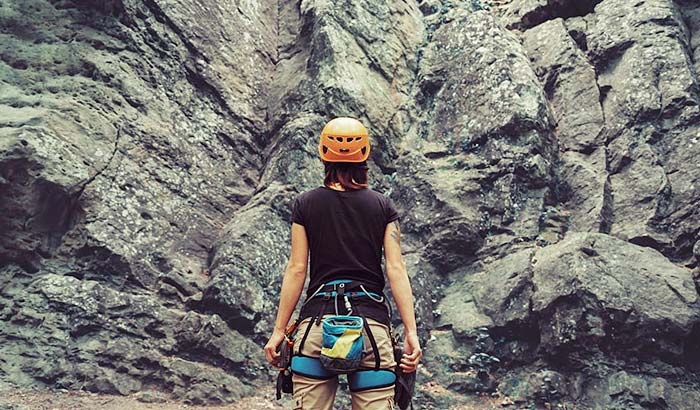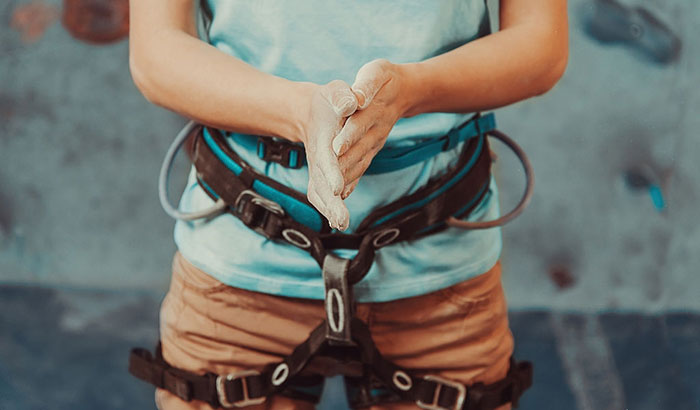A climbing harness is an essential part of any climbing activity. Apart from choosing between a dry and non dry rope, having the right harness that fits well will determine the climbing activity’s comfort and safety. The harness protects you in the event that you fall during the climb. Having a poorly fitting harness will give some possibility that you will slip out of it, or you will be very uncomfortable during the duration of the climb.
But how should a climbing harness fit? Generally, the harness must fit just over your hip. The tightness should be enough not to slide down but should be loose enough to avoid pressure points or hot spots. In this article, we will be detailing the right fitting of the harness with respect to its multiple parts. We will be providing the proper guidelines to have the right fitting for your harness.
How to Fit a Climbing Harness
So, before learning and doing any climbing activity, it is essential to learn to fit your climbing harness. The initial thing to do, especially if you are a new climber, is to orient the harness. At the forefront of the harness is the belay loop, which is elastic straps that will be holding your legs looping up. All you have to do is hold the harness and the belay facing away from you while the elastic strap facing towards the back.
The next thing to do is to step on the waist belt, putting one leg through each leg loop. Make sure that you will have your legs up nicely and high above your hips while pulling the harness up. That step is an integral part of properly fitting the climbing harness. After the harness is already in position, you will need to start cinching down the waist belt while ensuring that the belt has enough tightness to not pull back down over my hips. Doing this way is a sign that you are secure and will not fall down on the harness.
When it comes to leg loops, most of the harnesses are built with a fixed leg loop which means they cannot be adjusted. The reason for this is that this part of the harness is for comfort while preventing anyone from flipping over. However, some harnesses have adjustable leg loops, but the adjustment should only be limited to snugging them down to be more comfortable. They will help in dispersing the weight, and while sitting in the harness, all the weight is not just pulling in your waist. It is like you are just sitting on the chair while you are comfortable when hanging.
Fitting Guidelines for your Harness
The harness comes with different parts, and the knowledge to fit all the parts is the key to achieving an excellent fit. Please check on some guidelines below:
Fitting of the Waistband
For the waistband, the most essential thing to do is looking the appropriate size of the waistband, which is also known as the belt. The purpose of this action is to identify the overall circumference of the climber’s waist. After the waist circumference is identified, you can now identify the size depending on the harness brand that fits you well.
The next step is putting the harness while placing the waistband just over your hip. After that, you can do the necessary adjustment to get the right fit for your waist. You will need to tighten the band to achieve a tightness that is just adequate to prevent the harness from sliding down but should be loose enough, preventing pressure points and hot spots.
Fitting the Leg Loop
This part of the harness is all about providing comfort and the proper distribution of weight so that the climber will not drop upside down. So, in that case, you will be in charge of fitting the leg loop tightness depending on your preferred comfort. The initial step is to measure the circumference of the leg for you to be able to include that measurement in sizing the harness.
After that, you can put the harness on you while adjusting the waistband as needed. The next step is to make the leg loop tight until that it fits four fingers between the leg loop and you. However, you will need to make sure that your legs can still do complete movements during the climb. If you do not have the full leg movement, you will need if the tightness is caused by the leg loop or the rise straps. If the leg loop is the cause of the tightness, loosened them as required.
Fitting the Rise Strap
Many harnesses come with fixed or unadjusted rise straps located at the backside of the harness and are connected to the legs to the back of the harness. However, if the harness you own is adjustable, you can start adjusting it by moving your legs around and seeing the maximum range of motion. If the motion is limited, you can make the rise straps loosen. If you own a harness with fixed rise straps, then fins a harness with longer straps.
The next step is to test the rise straps by hanging them on the harness. In my experience, there are many climbing places that offer climbing walls or even a rope that will test the status of the harness. You can use your strength in keeping the body upright, but if it does not force you in a sitting position, you can adjust accordingly by tightening or loosening the rise straps.
Conclusion
When it comes to learning how a climbing harness fit, the tightness should just be enough that it will not slide down but should also be loose enough to prevent any hot spots or pressure points. Either way, it is all about comfort and safety when you are doing a climbing activity. So, you will need to be familiarized with fitting the harness the right way to make climbing an enjoyable thing to do.


